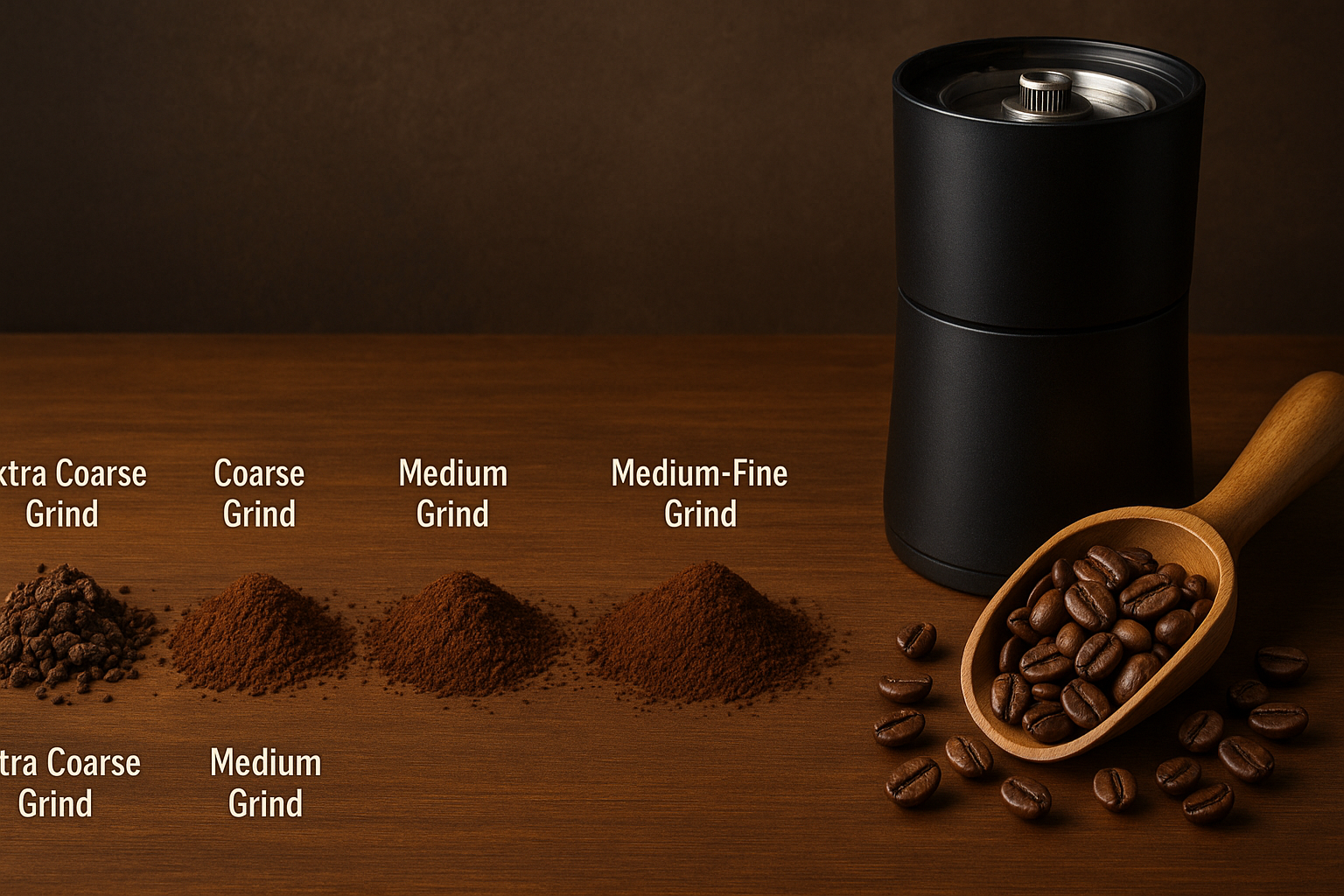One of the most overlooked yet essential aspects of brewing a great cup of coffee is the grind size. Even if you buy the highest-quality beans, store them perfectly, and use the best brewing equipment, the wrong grind size can ruin the flavor and texture of your coffee.
Grinding coffee properly for each brewing method ensures optimal extraction, where the right amount of flavor, aroma, and body is pulled from the beans.
Whether you prefer a bold espresso, a smooth pour-over, or a rich French press, mastering your grind size is a game-changer for your coffee experience.
Why Grind Size Matters
Coffee brewing is all about extraction. When hot water comes into contact with coffee grounds, it extracts soluble compounds that create the flavor and aroma of your drink.
If the grind is too fine for your brewing method, over-extraction can occur, resulting in a bitter and harsh taste. If the grind is too coarse, under-extraction can lead to a weak and sour cup.
Each brewing method has an optimal contact time between water and coffee, and the grind size directly impacts that timing.
The Types of Coffee Grinders
Before diving into grind sizes, it’s important to talk about the equipment. There are two main types of coffee grinders:
- Blade grinders: These use rotating blades to chop coffee beans into small pieces. While inexpensive, they often produce uneven grinds, which can affect consistency.
- Burr grinders: These crush beans between two abrasive surfaces (burrs) and produce a uniform grind size. Burr grinders, especially adjustable ones, are the preferred choice for coffee enthusiasts.
Investing in a good burr grinder can make a noticeable difference in your coffee quality, as it allows precise control over the grind size for each brewing method.
Grind Sizes for Popular Brewing Methods
Extra Coarse Grind – Cold Brew
Cold brew coffee requires a long steeping time—usually 12 to 24 hours. An extra coarse grind ensures that extraction happens slowly and evenly without producing overly bitter flavors.
The grounds should look like large sea salt crystals. This grind allows cold water to extract smooth, sweet flavors without excess acidity.
Coarse Grind – French Press
The French press is a full-immersion brewing method where coffee grounds steep in hot water for about four minutes before being pressed.
A coarse grind (slightly smaller than cold brew but still chunky) prevents too many fine particles from slipping through the metal filter, avoiding a gritty texture. This grind size allows for a bold, full-bodied cup.
Medium-Coarse Grind – Chemex
The Chemex uses a thick paper filter that slows down the brewing process, requiring a medium-coarse grind similar to rough sand. This size balances flavor clarity with proper flow rate, producing a clean cup with complex flavors.
Medium Grind – Drip Coffee Makers and Siphon Brewers
For most standard drip coffee machines, a medium grind is ideal. It resembles beach sand in texture and provides a balanced extraction. The same grind works for siphon brewers, which rely on a moderate brew time and even extraction.
Medium-Fine Grind – Pour-Over (V60, Kalita Wave)
Pour-over methods benefit from a medium-fine grind, slightly finer than sand. This grind allows water to flow steadily while ensuring enough contact time for full flavor extraction. If the grind is too coarse, the water will pass through too quickly, resulting in a weak cup.
Fine Grind – Espresso
Espresso brewing involves forcing hot water through compacted coffee grounds under high pressure in about 25–30 seconds. A fine grind is essential for proper resistance and extraction. The particles should be finer than table salt, allowing for a concentrated, intense shot with rich crema.
Extra Fine Grind – Turkish Coffee
Turkish coffee is brewed unfiltered and requires an extra fine grind that’s powdery, almost like flour. This ensures that the grounds remain suspended in the water during brewing, producing a thick, strong coffee with a distinctive mouthfeel.
How to Adjust Your Grind Size
Even with general guidelines, you may need to adjust your grind depending on your beans, roast level, and personal taste. If your coffee tastes too bitter or harsh, try a slightly coarser grind. If it tastes too weak or sour, go a bit finer. Small adjustments can make a big difference in flavor balance.
Tips for Grinding Coffee Like a Pro
- Grind just before brewing: Coffee loses flavor quickly after grinding due to oxidation. Grinding right before brewing preserves freshness.
- Measure your coffee: Use a scale to keep your coffee-to-water ratio consistent. This helps you fine-tune the grind size more effectively.
- Clean your grinder regularly: Old coffee oils and particles can go rancid and affect the taste of your coffee.
- Match grind size to brewing time: Longer brew times need coarser grinds, while shorter brew times need finer grinds.
Final Thoughts
Grinding coffee properly is one of the simplest yet most impactful ways to elevate your coffee experience. By matching the grind size to your brewing method, you control extraction and unlock the best possible flavors from your beans.
Whether you enjoy a slow-brewed cold brew, a rich espresso, or a balanced pour-over, understanding grind size is the key to consistency and satisfaction in every cup.
Mastering this skill doesn’t require expensive equipment—just attention to detail, a quality burr grinder, and a willingness to experiment until you find your perfect grind.
